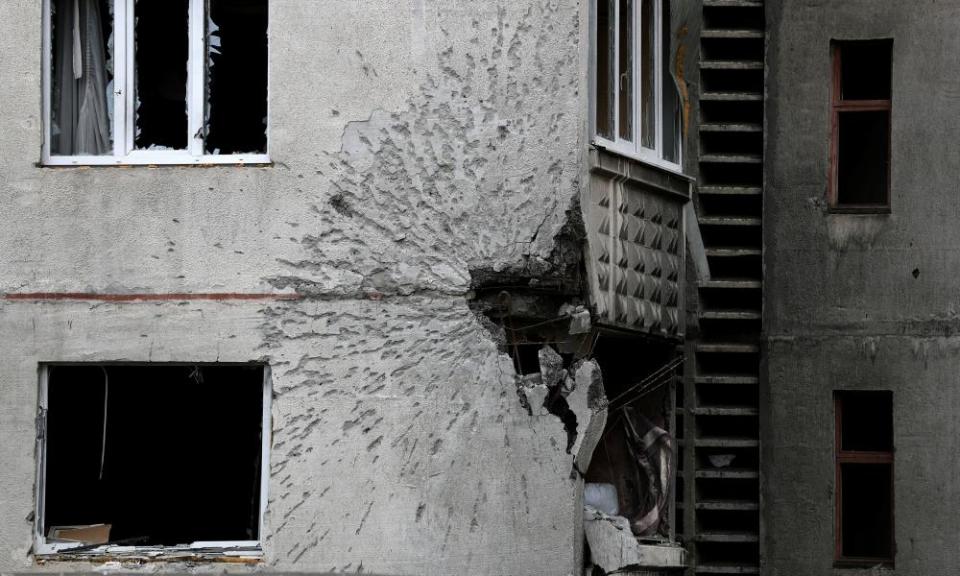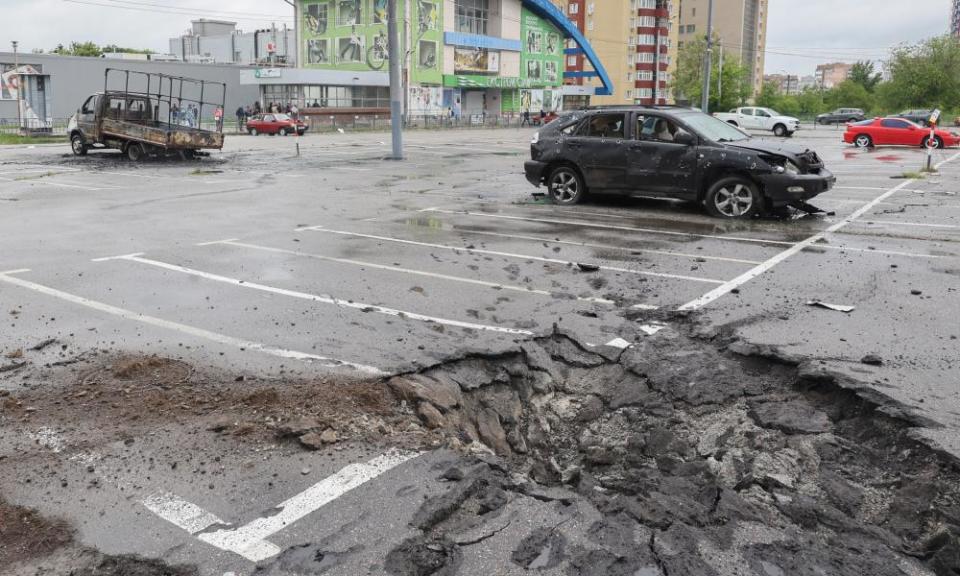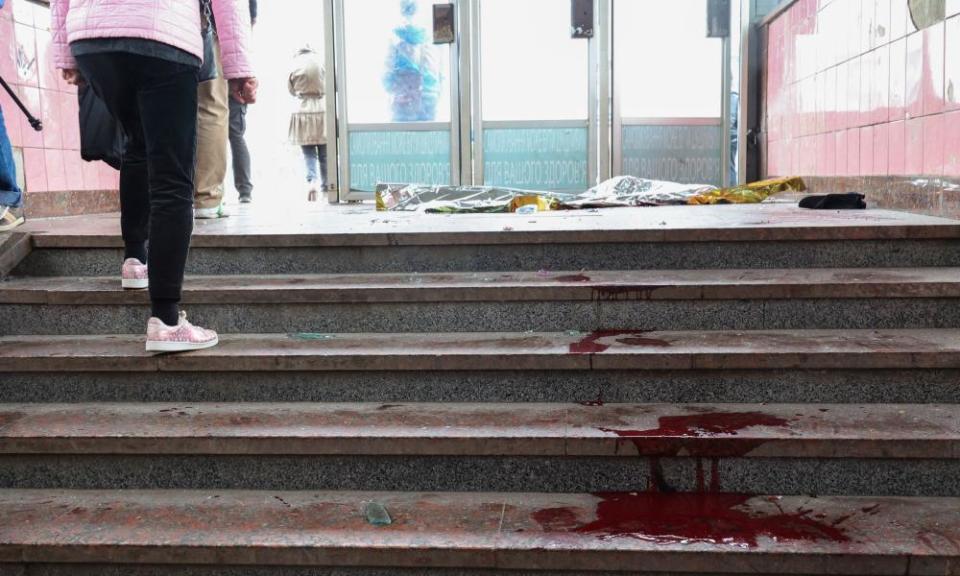Kharkiv hit by fresh strikes amid fears city is still on Russian agenda

Artillery has pounded the city of Kharkiv for the first time in two weeks, just as life in Ukraine’s second city was starting to return to normal after Russian troops were pushed back from its outlying towns and villages.
Kharkiv’s regional governor, Oleh Synehubov, said at least nine people had been killed and 17 injured in the attacks on the northern part of the city.
“There’s no logic to it, it’s just terror against the local population, to sow panic and to destroy critical infrastructure,” said Synehubov, dressed in military fatigues with a pistol at his hip, in an interview with the Guardian in central Kharkiv shortly after the attacks.
The largely Russian-speaking city near the border of the two countries was heavily attacked during the first days of the war as Russian forces tried to take control, but they were pushed back to the suburbs. The Russians sent artillery and missiles into the city, on one occasion destroying the regional administration building, housed in a grand Stalin-era structure.
The Russians have been pushed further back over the last six weeks as Ukrainian forces regained control of several towns and villages, but they remain well within artillery range of the city centre.
“For two weeks it’s been relatively quiet … I think this is them saying hello, telling us they are still there, trying to create panic,” Synehubov said.
Related: ‘When will it all end?’: Kharkiv counts the cost as Russians pull back
The booms of incoming and outgoing artillery fire were audible throughout Thursday, shaking buildings and setting off car alarms in central Kharkiv.
In the afternoon, a deep shell crater was left on Otakara Yarosha Street in front of a block of flats from which the windows on all five floors had been blown out. Police at the scene said they did not know how many people had died there.

Outside the 23 August metro station, a blast had brought down large branches from several trees, and dead pigeons and tangled electricity cables lay scattered across a wide expanse of concrete. Shrapnel had torn holes in a nearby second world war monument.
It was not immediately obvious whether people had died at the scene, and there were few people around to ask, as air raid sirens and the booms of artillery sounded.
Related: Russia-Ukraine war: what we know on day 92 of the invasion
A steady flow of residents had started to return to their homes in the city. A few cafes and restaurants had opened, people were strolling in city parks on Thursday morning and this week, and the metro began operating again for the first time since the invasion. In recent weeks, its main use has been as a bomb shelter, with thousands living on its underground platforms.
The city mayor, Ihor Terekhov, told residents: “We will not stop the metro, but we will allocate special sectors where you can stay and shelter from bombing.”

After Russia failed in its assaults on Kyiv and Kharkiv in the early days of the war, Moscow has concentrated much of its efforts on a bloody offensive to take more territory in the Donbas region. But Thursday’s attacks raised fears that Kharkiv could still be on the agenda.
“The Russian troops are engaged in a counter-offensive, and are trying to reoccupy territories that were liberated by our troops just a month ago,” said Oleksandr Filchakov, Kharkiv region’s chief prosecutor, in an interview with the Guardian. He said he believed the ultimate aim was to launch a renewed assault on the city itself.
Filchakov also noted reports that Russian troops were unloading Iskander missiles at the railway station in Belgorod, just across the border.
For now, said Synehubov, a renewed ground assault on the city was not possible. “They are firing from the positions they have held for a long time; they are constantly trying to counterattack but our forces are holding their positions.”
He said there was not a significant enough buildup of new troops and equipment on the other side of the border to signal the capacity for a new assault on the city. “But that’s right now, and the situation can change at any minute,” he added.
However, Synehubov said, the main problem for the Kharkiv region, unlike others, was that the Russians continued to shell settlements after they had retreated.
“In Kyiv, Sumy, Chernihiv regions, the Russians fought for a certain period, realised they had hit a wall and then took the decision to retreat, and they retreated fully from these territories,” he said.
“Here, even if we liberate a place, then the enemy stays in its positions and keeps hitting it, and we can’t properly evacuate people, we can’t bring humanitarian aid, because these places are under permanent fire. We can’t bring in de-mining teams because of the shelling, so we need to push the enemy back even further so they would focus on our positions and not on population centres,” he said.

 Yahoo Movies
Yahoo Movies 